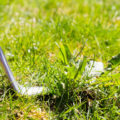
Hedges can make for a great addition to any garden in Australia and if well-kept, they can quickly transform your backyard space into a beautiful place. Like many other plants, to stay neat and healthy-looking, shrubs require regular maintenance.
Any existing diseased or dead branches can not only ruin the lush look of your hedge but also harm the plant’s health. That is why pruning should never be overlooked. At the same time, regular trimming is also necessary for promoting growth in relatively young hedges or promoting the growth of overgrown ones.
Whether you have never cut hedges before or you are simply wondering if you are taking care of your plant properly, keep reading because this article is packed with valuable information. We have prepared some useful tips on hedge maintenance and a simple step-by-step guide on how to correctly cut hedges.
When to cut hedges in Australia?
During the early years, hedges need formative pruning to have their form shaped and to grow vigorously. In addition to that, pruning can be also done on mature shrubs for the purpose of removing dead or disease-stricken branches. Usually, the right season and frequency to prune hedges depends on the species and the plant’s current condition.
In general, late winter to early spring, before the hedge buds, is considered the best time to prune your hedges. At that time of year, your shrubs will be in their dormancy and there will be fewer leaves, which will provide you with better visibility of the branches. Cutting in late winter can also promote extensive growth in the future.
Moreover, the low level of humidity and the cold air ensure that any bacteria and pests will be killed off before they can enter through the fresh cutting wounds. However, keep in mind that if you live in an area with a temperate climate, you should avoid cutting back branches as early as autumn. During this time of year, there is a greater presence of fungal spores, which can cause an infection.
If you simply want to take care of your hedge’s aesthetic looks, then the best time for some maintenance trimming would be summer. It is a favourable period to take care of overgrown shrubs whose shape and size don’t sit well with their surroundings or whose rapid growth has exhausted the plant.
How to trim hedges
The way you trim a hedge will depend on the result and shape you want to achieve. Both formal and informal hedging are options and the one you choose will be based on the hedge species and your taste.
- Formal hedging refers to trimming in a neat, box-shaped style, which is usually more suitable for species, such as lilly pilly, box, yew, holly, photinia, and coastal rosemary. The advantage here is the exquisite appearance, but keep in mind that several trimming sessions will be needed throughout the year to maintain the neat shape.
- Informal hedging is defined by low maintenance and a more natural appearance that still looks fantastic. It works best for bottlebrush cultivars, grevillea, hawthorn, hazel, hibiscus, and roses.
If you have decided on informal hedging, then you will be glad to know that this option requires very little to no trimming. However, if you like the geometric style of formal hedging, prepare all your tools and get ready to unleash your inner gardener. Don’t worry if you don’t feel confident enough to handle the task – we are here to help!
Check below to find all the necessary tools, as well as a step-by-step guide on how to correctly trim hedges.
Hedge trimming tools:
- Leaf blower
- Hand-held pruners/Pruning loppers
- Curved saw
- Electrical hedge trimmer
- Ladder
- Hard bristle broom
- Garbage bags
- Protective gear
The hedge trimming and shaping process
If you’ve gathered your tools and put on your safety gear, then let’s get to the actual work.
- Remove any loose or stuck leaves – Use a leaf blower to clear the hedge of leaves and get better visibility of the shape and the condition of the branches.
- Decide on the shape – Place ground stakes at the corners of the hedge and attach string lines to them. This will help you keep the lines straight and follow the desired shape throughout the trimming. You can also choose between straight edges or slightly rounded ones.
- Prune the hedge – Remove any damaged, diseased, or dead branches by cutting as close to the main stem as possible. This is especially important for the plant’s health as damaged branches can spread diseases to the parts and prevent light and air from entering the hedge.
- Trim the sides – Trim off any newly-grown stems by clipping just the tips. Then, turn your attention to the sides. It is easier to start from the ground up. Work in sections, and follow the string lines. Going about a third of the hedge up, work your way from one end to the other, using back and forth motions. Then, move to the middle section, trying to blend the parts, and finish with the upper third.
- Clip the top – Trim flat along the top of your hedge. There is no need to put much pressure here. Simply hold the trimming blade at a slight 10-degree angle. If your hedge is particularly tall, you will need to use a ladder.
- Clean the trimmings – Once done, remove all cut branches left on top. Use the leaf blower again or a hard bristle broom. Dispose of all the trimmings as soon as possible – you don’t want to attract pests.
- Feed the hedge – Use a fertiliser after the trimming to encourage new, vigorous growth.
Extra hedge trimming tips to remember
Establishing a good trimming and pruning plan ensures healthy hedges and a beautiful-looking garden. Moreover, using the right tools can make the process much easier for you and help the hedge heal faster. To have your hedge garden neatly maintained, check below some of our hedge trimming tips and techniques:
- Always keep your cutting tools sharp and clean;
- Check for nesting birds before you start pruning or trimming, especially during the early periods of the year. Wait until the birds have fledged;
- If possible, try trimming in mid-morning when the dew has evaporated and the moisture is limited. Alternatively, trim in the late afternoon;
- If you live in an area with even a small amount of snowfall and frost, aim for rounded tops because the accumulation of snow can damage the inner branches;
- In the beginning, use hand-held pruners to get rid of thicker branches;
- While overgrown shrubs can handle heavy trimming, be careful not to sever any main branches at the bottom because they are the ones that feed the top stems;
- As tempting as it may be, never cut by eye. You will need a string line to make the sides straight;
- Don’t cut evergreens when they are dry. If you plan to trim them in the summer, water the plants the evening before.
Takeaways
- Hedges require constant trimming and pruning to grow healthy and look fresh;
- The best time to cut your hedges is from late winter to early spring;
- Formal hedging consists of cutting sharp edges and neat shapes. Note that this technique requires regular maintenance;
- Informal hedging allows a more natural form and little care;
- If you lack the necessary tools or time to do your hedge trimming, consider seeking the help of a seasoned gardener.
Do you find hedge trimming too tiring?
Book an appointment for a beautifully maintained hedge garden!








